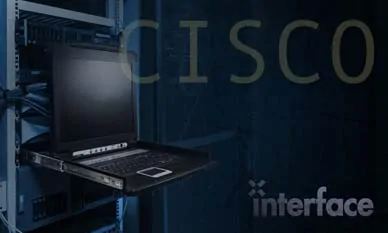You landed here because CCNAv2.2 is a replacement for the following:
CCNAv2.1: Implementing and Administering Cisco Solutions (CCNA) v2.1
GOT IT!
Questions? Call 602-266-8585

x
Course: Outline
Course Outline:
- Exploring the Functions of Networking
- Introducing the Host-To-Host Communications Model
- Operating Cisco IOS Software
- Introducing LANs
- Exploring the TCP/IP Link Layer
- Starting a Switch
- Introducing the TCP/IP Internet Layer, IPv4 Addressing, and Subnets
- Explaining the TCP/IP Transport Layer and Application Layer
- Exploring the Functions of Routing
- Configuring a Cisco Router
- Exploring the Packet Delivery Process
- Troubleshooting a Simple Network
- Introducing Basic IPv6
- Configuring Static Routing
- Implementing VLANs and Trunks
- Routing Between VLANs
- Introducing OSPF
- Building Redundant Switched Topologies
- Improving Redundant Switched Topologies with EtherChannel
- Explaining the Basics of ACL
- Enabling Internet Connectivity
- Introducing AI and ML in Network Operations
- Introducing System Monitoring
- Managing Cisco Devices
- Securing Administrative Access
- Implementing Device Hardening
- Exploring Layer 3 Redundancy
- Introducing WAN Technologies
- Introducing QoS
- Explaining Wireless Fundamentals
- Introducing Architectures and Virtualization
- Explaining Software-Defined Networking
- Introducing Network Programmability
- Examining the Security Threat Landscape
- Implementing Threat Defense Technologies
Lab Outline:
- Get Started with Cisco CLI
- Observe How a Switch Operates
- Perform Basic Switch Configuration
- Inspect TCP/IP Applications
- Configure an Interface on a Cisco Router
- Configure and Verify Layer 2 Discovery Protocols
- Configure Default Gateway
- Explore Packet Forwarding
- Troubleshoot Switch Media and Port Issues
- Troubleshoot Port Duplex Issues
- Configure Basic IPv6 Connectivity
- Configure and Verify IPv4 Static Routes
- Configure IPv6 Static Routes
- Configure VLANs and Trunks
- Configure Inter-VLAN Routing
- Configure and Verify Single-Area OSPF
- Configure and Verify EtherChannel
- Configure and Verify IPv4 ACLs
- Configure a Provider-Assigned IPv4 Address
- Configure Static NAT
- Configure Dynamic NAT and PAT
- Configure and Verify NTP
- Create the Cisco IOS Image Backup
- Upgrade Cisco IOS Image
- Secure Console and Remote Access
- Enable and Limit Remote Access Connectivity
- Configure and Verify Port Security
- Log in to and Monitor the WLC
- Configure an Open Wireless Network
- Define a RADIUS Server and Enable SNMP and Syslog
- Configure a WLAN to Use WPA2 PSK
Audience
The job roles best suited to the material in this course are:
- Entry-level Network Engineers
- Entry-level Network Administrators
- Entry-level Network Support Technicians
- Entry-level Help Desk Technicians
Prerequisites
The knowledge and skills you are expected to have before attending this training are:
- Basic computer literacy
- Basic PC operating system navigation skills
- Basic internet usage skills
- Basic IP address knowledge
There are no formal prerequisites for CCNA certification, but you should make sure to have a good understanding of the exam topics.
What You Will Learn
- Identify the components of a computer network and describe their basic characteristics
- Understand the model of host-to-host communication
- Describe the features and functions of the Cisco IOS Software
- Describe LANs and the role of switches within LANs
- Describe Ethernet as the network access layer of transmission control protocol and the internet protocol (TCP/IP) and describe the operation of switches
- Install a switch and perform the initial configuration
- Describe the TCP/IP internet layer, IPv4, its addressing scheme, and subnetting
- Describe the TCP/IP transport layer and application layer
- Explore the functions of routing
- Implement basic configuration on a Cisco router
- Explain host-to-host communications across switches and routers
- Identify and resolve common switched network issues and common problems associated with IPv4 addressing
- Describe IPv6 main features, addresses and configure and verify basic IPv6 connectivity
- Describe the operation, benefits, and limitations of static routing
- Describe, implement and verify virtual local area networks (VLANs) and trunks
- Describe the application and configuration of inter-VLAN routing
- Explain the basics of dynamic routing protocols and describe components and terms of open shortest path first (OSPF)
- Explain how spanning tree protocol (STP) and rapid spanning tree protocol (RSTP) work
- Configure link aggregation using EtherChannel
- Describe the purpose of Layer 3 redundancy protocols
- Describe basic wide-area network (WAN) and virtual private network (VPN) concepts
- Describe the operation of access control lists (ACLs) and their applications in the network
- Configure internet access using dynamic host configuration protocol (DHCP) clients and explain and configure network address translation (NAT) on Cisco routers
- Describe the basic quality of service (QoS) concepts
- Describe the concepts of wireless networks, which types of wireless networks can be built and how to use WLC
- Describe network and device architectures and introduce virtualization
- Explain software-defined networks
- Configure basic Cisco IOS system monitoring tools
- Describe the management of Cisco devices
- Describe the current security threat landscape
- Describe threat defense technologies
- Implement a basic security configuration of the device management plane
- Implement basic steps to harden network devices
- Discuss the need of network programmability in Enterprise networks, common programmability protocols, and configuration management tools
- Describe AI and ML in network operations

